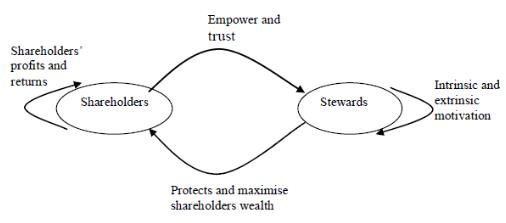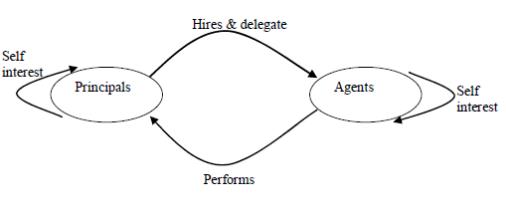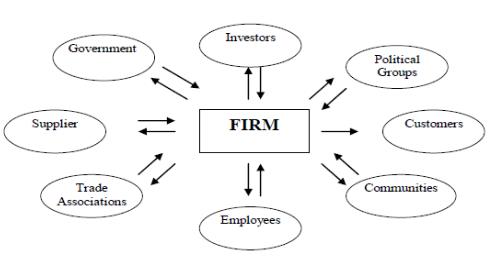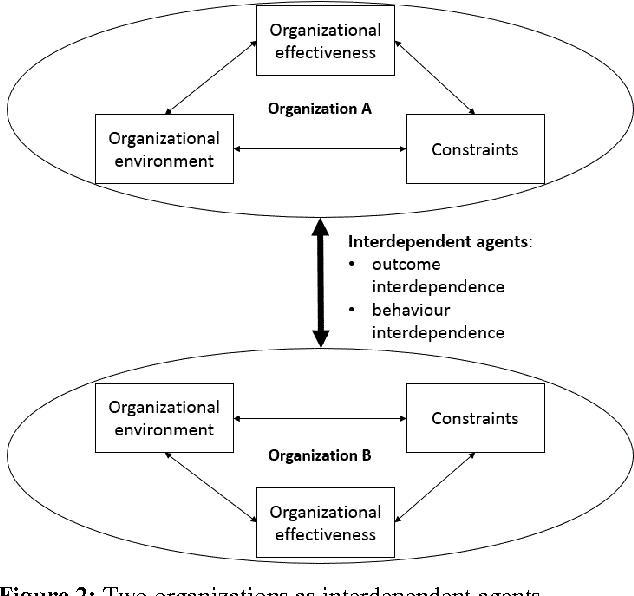Discussion On Stewardship Theory And Seminal Theories Of Governance
Question
Task: Provide an in-depth review on the stewardship theory and seminal theories of governance.
Answer
Introduction
The study of this paper will be based on reviewing the seminal theories of governance and Stewardship theory which directly influences the work carried out by functional business organizations belonging to the profit or non-profit sectors. The discussion will be carried by the identification of the key theories that help in increasing the effectiveness of the organization. The concept of stewardship governance refers to the standards where someone of the respective organization is responsible for protecting and taking care of the needs as well as requirements of the organizations. Followed by a discussion on the stewardship theory and the effectiveness of the leadership theories applied for both the non-profit and the profitable organizations will be carried out.
Analyzation of the key theories of governance to increase the effectiveness of the organization in general
The understanding of the key theories of the stewardship theory of corporate governance is found to be responsible for the requirement of a structure for monitoring the performance and plan for the future of the organizations (Bache, Bartle & Flinders, 2016). Therefore, categorizing of the theories is further beneficial for increasing the efficiency of the tasks carried out and achieve success for maintaining their sustainability in the current competitive environment. The various models of corporate governance are discussed in the section below as follows:
Stewardship Theory:
Stewardship theory is one of the important theories consisting under corporate governance and is evident to be able of protecting as well as maximising the assets of the stakeholders by increasing the performances carried out (Bernstein, Buse & Bilimoria, 2016). Stewards of the organizations generally refer to the managers or the executives of the company who are working as the shareholders and is given the responsibility for securing the profits obtained by the companies both private and non-profit. The implementation of Stewardship theory prioritizes upon the position of the employees or the executives for acting more autonomously in order to increase the returns generated by the shareholders.

Figure 1: Stewardship Theory
Source: (Glinkowska & Kaczmarek, 2015)
The Agency Theory:
The implementation of the agency theory lies underneath the reason that this helps in strengthening the relationship present among the principles or the shareholders and the agents or the directors of the company. As per this theory, the principles delegate the activities that required to be taken for the functioning of the business to the directors or managers of the company (Bendickson et al. 2016). Although this theory is responsible for strengthening the relationship however is found to be responsible for focusing on self-interests, opportunistic behaviour in nature is also evident. Hence, this theory helps in increasing the awareness of taking responsibility for each of the employees by themselves and help in determining their performances in a hassle-free manner.

Figure 2: Agency Theory
Source: (Pepper & Gore, 2015)
Stakeholder Theory:
The importance of this theory helps in gaining a clear understanding of the accountability of management covering a broader range of stakeholders. Therefore, this theory helps in increasing the flexibility of the networks created consisting of employees, suppliers and partners associated with the current business. Hence, the implementation of the stakeholder theory helps in prioritizing the focus especially upon the areas of managerial decision making and enhancing the interests that are taken by the stakeholders of the company. The influence of the decision making of the stakeholder theory is found to be directly influencing the decisions making and functioning of the investors, government, political groups, suppliers, trade associations, customers, communities as well as the employees.

Figure 3: Stakeholder Theory
Source: (Miles, 2017)
Resource Dependency Theory:
The resource dependency theory of corporate governance prioritizes the role played by the board of directors for providing access to the resources that are required by the respective organizations of business and is applicable for both non-profit as well as the profit-making organizations. The advantage of this theory over Stewardship theory is that it upholds the factors that directors directly are linked with influencing and functioning of the works that are carried out in the external business environment. The usefulness of this theory is due to the availability of the resources such as skills, knowledge, policymakers, buyers, social groups which tend to enrich the sustainability of the competitiveness and sustainability of the business.

Figure 4: Resource Dependency Theory
Source: (Sommerfeldt, 2018)
What is the contribution of the stewardship theory to effective governance in profit and non-profit organizations?
The contribution of the stewardship theory is found to be referring to wither an individual person or group of individuals who are responsible for making any claims about the organization due to their responsibility for proper utilization of the available assets of the company. This theory upheld the facts that the previous or the traditional management of the organizations generally used to emphasize upon the management of the stakeholders, internal affairs, reducing or elimination of the explicit management which directly impacts on the functioning of the external as well as internal interface of an organization (Van Puyvelde et al. 2016). As per the information present in the existing studies, it upholds the fact that any organization can categorise the types of stakeholders into types such as the internal or external stakeholders. Internal stakeholders will be comprised of the employees or the managers of the organizations whereas, the external stakeholders will be the board of directors who are responsible for maintaining the external relationship for enhancing the interface of the organizations and maintaining the transparency of the work initiated by the respective profit for non-profit organizations. Hence, the implementation of the theory of stewardship can possess a threat or benefit to the company at the same time can be found. The Stewardship theory can thus, be profitable for both the non-profit or profit organizations. In the case of the non-profit organization, the theory is found to be effective in the areas of the directors who act as the governing bodies for increasing the connections with the external factors that will lead to enhance the works that are carried out on external basis. Implementation of this Stewardship theory will help in ensuring that the managers, employees and external funders or the partners of the organization will be able to maintain the initiatives that are taken by them for accomplishing the tasks assigned to them. Along with this, in the case of the profit-making organizations, it can be found that implementation of the stewardship theory the organizations are found to be capable of increasing the efficiency of the use of internal as well as external resources in an effective manner (Eller, 2017). According to the data gathered from the previous studies, it can be said that the theory of stewardship is more effective as compared with the other theories of corporate governance. The agency theory is found to be very dominant in nature which lies within the paradigm and doesn't cover all the aspects of the assets that can be utilized for accomplishing the set of tasks or the vision and mission of the companies.
Discussion of the Ethical/Biblical principles
Reviewing of the varied types of the theories of corporate governance the theory of stewardship is found to be greatly influencing the decision making of the organization. Therefore, it can be observed that the model and the theories of leadership is sometimes dependent upon the Christian principles in case of non-profit organizations. As per the beliefs of the biblical principles, it is found that the non-profit organisations tend to recognise that God owns or claims sovereignty over all that exists and is the ultimate owner and hence is countable within the business practices and the business is conducted by the organisations (Golata, 2018). On the other hand, another set of believers refers that biblical principles followed within the community are associated with business and follows the theory of stewardship believes that God has sent them to manage all the existing resources on his behalf. However, the third biblical reference in the modern history of stewardship within the Christian Church has created limited social context leads to influence the changing of the processes for shaping the business and hence improving the growth of the economic scenario of the country at the same time.
Explanation of the effectiveness of leadership and governance
The effectiveness of leadership within an organisation help send maintaining a flexible relationship or bonds among the diverse people who are working for a common goal or purpose within an organisation. The presence of effective leadership is thus beneficial for inspiring and empowering the people for realising their efficiency and capabilities for accomplishing the task assigned to them. The characteristics of good leadership include decisive which is the leader tends to manage the time without wasting it and for obtaining an effective outcome from the same (Willems, 2016). The common problems of the issues that can be observed within an organisation lies for improper decision making which leads to reduce the efficiency of the product production process and leads to in completion of the task within the Further, the leaves towards reducing the scopes of the portion it is available of the company into the new market and its competitiveness in the current competitive market. The characteristics of a leader also involved there independent nature, which helps them to improvement enhance the existing set of skills and knowledge in order to provide effective leadership to the members and meet the common goal within the given time frame despite the obstacles faced by them during the completion of the process. The other features of a good later also are found to be intellectual in nature who takes interest in the problems of the issues that occur within the processes and focuses on finding an appropriate solution for resolving the issue and pressuring the task that is required to solve first. The passionate nature of the good leaders allows them to engage actively in the works and along with the team members and understand their problems and take care of them during the task. This is found to be capable of providing motivation and encouraging the members to take actions and interest in completing the tasks assigned to them and meet their common. In case of the stewardship theory, it is found that the leaders following the theory impose their trust and are in practices interest intrinsic and extrinsic motivation which allows them to and sharing and protecting the tasks that are carried out. Followed by helping them to protect and maximize the profit obtained by the shareholders along with increasing their interest in actively engaging themselves within the decision making and obtain profits and returns in an increased amount. The combined factor of the leadership and governance relates that governance does not only include practices of leadership but consists of visionary and accountable in nature (Jain & Jamali, 2016). Thus, the presence of the fact covenants factor helps in increasing the credibility of the information and effective decision making which is carried out in a rapid and continuous process without wasting any time for achieving a better economical cultural and social benefits for the company functioning on the profit or non-profit segments. Provided it should be noted that the leaders belonging to the non-profit organisations tend to be more determined as they work for improving the living standards and facilitating quality goods and services to the customers with the help of the available assets of the company. On the other hand, the leaders belonging to the profit-making organisation is found to be more determined about the profits that will be obtained by the company by selling the products or services to the customers of the company.
Conclusion
The completion of the society of stewardship and governance helped in enriching reviews about the advantages that will be obtained by the companies functioning in the non-profit sector or in the profit sectors. Followed by, gaining a deeper understanding about the various types of theories of governance and also the Stewardship theory helps in widening the views about the practices that can be followed by the organisation for improving their efficiency of the working processes and encouraging the workforce to complete the tasks within the given time frame. Along with this review of the effectiveness of the leadership and governance helped in presenting about the varied characteristics present within a leader which helps to foster the growth and development of the organisation increase the competitiveness within the current market.
Reference List
Bache, I., Bartle, I., & Flinders, M. (2016). Stewardship theory Multi-level governance. In Handbook on theories of governance. Edward Elgar Publishing.
Bendickson, J., Muldoon, J., Liguori, E., & Davis, P. E. (2016). Agency theory: the times, they are a-changin’. Management Decision, 54(1), 174-193.
Bernstein, R., Buse, K., & Bilimoria, D. (2016). Revisiting agency and stewardship theories: Perspectives from nonprofit board chairs and CEOs. Nonprofit Management and Leadership, 26(4), 489-498.
Eller, H. (2017). Corporate Governance and Corporate Social Responsibility: Research on the Interconnection of Both Concepts and Its Impact on Non-Profit Organizations. World Academy of Science, Engineering and Technology, International Journal of Social, Behavioral, Educational, Economic, Business and Industrial Engineering, 11(4), 848-852.
Glinkowska, B., & Kaczmarek, B. (2015). Classical and modern concepts of corporate governance (Stewardship Theory and Agency Theory). Management, 19(2), 84-92.
Golata, P. (2018). The Ethics of Superintelligent Design: A Christian View of the Theological and Moral Implications of Artificial Superintelligence. Wipf and Stock Publishers.
Jain, T., & Jamali, D. (2016). Looking inside the black box: The effect of corporate governance on corporate social responsibility. Corporate Governance: An International Review, 24(3), 253-273.
Miles, S. (2017). Stakeholder theory classification: A theoretical and empirical evaluation of definitions. Stewardship theory Journal of Business Ethics, 142(3), 437-459.
Pepper, A., & Gore, J. (2015). Stewardship theory Behavioral agency theory: New foundations for theorizing about executive compensation. Journal of management, 41(4), 1045-1068.
Sommerfeldt, E. J. (2018). Resource Dependency Theory. The International Encyclopedia of Strategic Communication, 1-5.
Van Puyvelde, S., Caers, R., Du Bois, C., & Jegers, M. (2016). Managerial objectives and the governance of public and non-profit organizations. Public management review, 18(2), 221-237.
Willems, J. (2016). Building shared mental models of organizational effectiveness in leadership teams through team member exchange quality. Nonprofit and Voluntary Sector Quarterly, 45(3), 568-592.
Zhang, F., Wei, L., Yang, J., & Zhu, L. (2018). Roles of relationships between large shareholders and managers in radical innovation: A stewardship theory perspective. Journal of Product Innovation Management, 35(1), 88-105.












